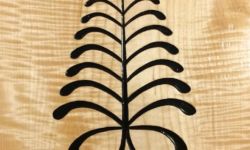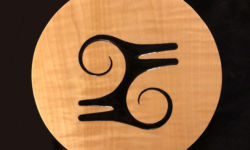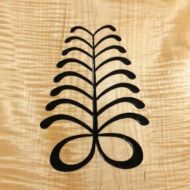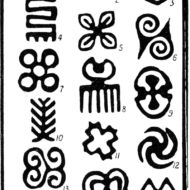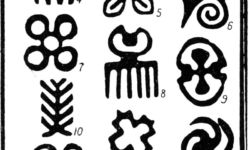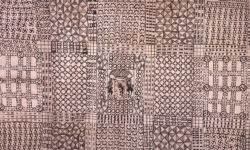Profile

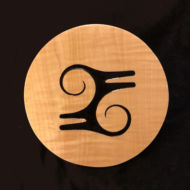
Adinkra symbols, like pictograms and emoji, exist in a broad hinterland of writing forms that lies beyond the clear, organized, well-defined street maps of alphabets. Likewise, their use goes well beyond the page or the computer screen, and they flourish in woodcuts, screen prints, architectural design, clothing fabrics, gold weights, jewelry, and even furniture. On the other hand, Adinkra are not simply visual designs or patterns. Individual Adinkra represent concepts, sayings, or proverbs, and as such are bearers of traditional wisdom. Such writing systems were once called “primitive,” in theory because they don’t have the one-letter-one-sound correspondence of “true” alphabets, though in practice because colonial authorities were instinctively predisposed to think their own languages and writing systems were unquestionably superior because they were, after all, the ones doing the colonizing.
But pictograms and ideograms have significant advantages, especially in areas where multiple languages are spoken: the very fact that the symbols don’t indicate sounds enables them to travel beyond the borders of specific language groups, like passports of meaning. This is exactly why Europe has universal traffic signs that display symbols rather than give verbal instructions.
Adinkra symbols are thought to have originated among the Ashantis during the wealthy, pre-colonial Asante Empire of present-day Ghana and Ivory Coast. The empire was founded in 1670, its capital Kumasi standing at a strategic crossroads of the Trans-Saharan trade routes. Ashanti oral tradition holds that Adinkra may be even older, originating in Gyaman, a state that existed for some four centuries before being subjugated by the Ashanti in the nineteenth century. According to tradition, Gyaman King Nana Kwadwo Agyemang Adinkra originally created or designed these symbols and named them after himself.
The oldest known Adinkra symbols were printed on a piece of cloth collected by an Englishman, Thomas Edward Bowdich, in Kumase in 1817. The patterns feature fifteen stamped symbols, including nsroma (stars), dono ntoasuo (double Dono drums), and diamonds, printed using carved calabash stamps and a vegetable-based dye.
Adinkra symbols — of which there are several hundred — are more than just patterns. Individual adinkra represent concepts, sayings, or proverbs, and as such are bearers of traditional wisdom.
Many writing systems were originally used by a specific minority within their culture, and Adinkra is no exception, although a different kind of exception. Adinkra-printed clothing was traditionally only worn by royalty and spiritual leaders for funerals and other very special occasions.
Over time, their use broadened, as did their background: when once they were typically hand-printed on undyed, red, dark brown or black hand-woven cotton fabric, depending on the occasion and the wearer’s role; they are now frequently mass-produced on brighter-colored fabrics, literally woven into the fabric of their society.
The Ga, or Ga-Dangme, people of Ghana use a similar set of symbols, called Samai.
An Adinkra alphabet has recently been created in. the style of the Adinkra symbols. It is not clear to what extent it is in use.
Updated August 2020
You can help support our research, education and advocacy work. Please consider making a donation today.
Links
General script, language, and culture resources
Ga Samai links
Gallery
